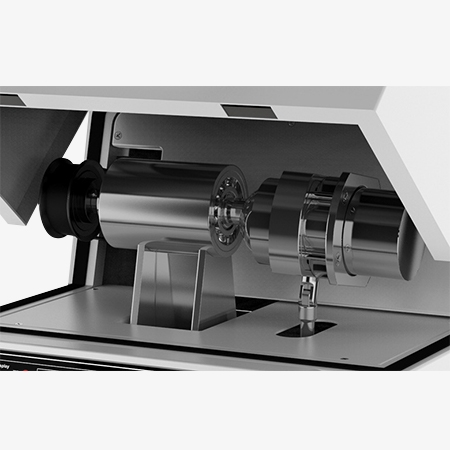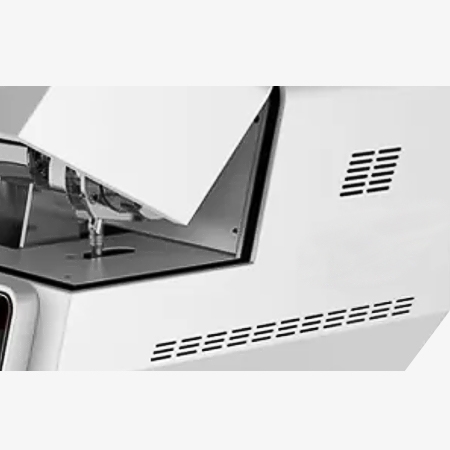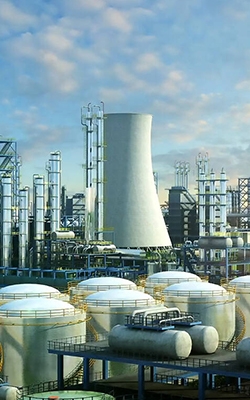SISCO high energy 3D vibration ball mill is a type of mechanical milling device used to grind and mix materials at a very fine scale. The 3D motion ensures uniform energy distribution and minimizes dead zones, resulting in consistent and efficient processing. High energy vibrating ball mill is commonly used in materials science, nanotechnology, pharmaceuticals, and metallurgy.

3D Motion in Vibration Ball Mill
- The primary advantage of 3D motion is the more efficient energy transfer to the grinding media and, subsequently, to the material being milled. The multi directional movement ensures that the balls collide with the material from various angles, increasing the frequency and intensity of impacts.
- In 3D motion vibration ball mill, this complex trajectory ensures that the material is uniformly exposed to the grinding action, leading to superior mixing and homogenization.
- Due to the consistent and multi-angled impact, vibrating ball mill tends to produce particles with a more uniform size distribution. This uniformity is essential for applications that demand tight control over particle size, such as ceramics, and nanomaterials.

High Energy Ball Mill Equipped With Cooling Vents
- The continuous mechanical impacts and friction between grinding media and material generate considerable heat, which, if not dissipated, can lead to overheating. This not only preserves the efficiency of the grinding process but also prevents potential thermal degradation of temperature-sensitive materials.
- Some materials, especially polymers, or certain chemicals, are sensitive to heat and may undergo unwanted chemical or physical changes when exposed to elevated temperatures. Cooling vents help prevent such degradation, ensuring that the structural integrity, reactivity, or efficacy of the processed material remains intact.
- Cooling vents reduce the thermal load on these mechanical components, extending the lifespan of the high energy 3D vibration ball mill and reducing the frequency of maintenance and replacement costs.
Applications
SISCO ball mill is a versatile grinding device used in various industries for reducing materials into fine powders. In the mining industry, it is widely used to grind ores and minerals for metal extraction. In the cement industry, ball mills help grind clinker and other raw materials to produce cement. Overall, the ball mill machine is a critical piece of equipment for materials processing in industrial, laboratory, and manufacturing settings.

Cement Industry

Ceramic Industry

Mineral Processing

Chemical Industry
| Model | SISCO-BM-P-VC100 | SISCO-BM-P-VC200 |
| Jar Quantity | 1 | 2 |
| Maximum Volume | 80ml | 160ml |
| Dimension | 430*318*268mm | 620*320*268mm |
| Net Weight | 35kg | 68kg |
| Power Supply | 220V 50Hz/ 110V 60Hz | |
| Max. Feeding Size | <1mm | |
| Discharging Particle Size | 0.1-20um | |
| Minimum Sample Throughput | 1g | |
| Ball Mill Speed | 1700r/min | |
| Ball Mill Movement | High frequency 3D motion | |
| Milling Jar Material | Zirconia/ stainless steel optional | |
| Jar Volume | 25ml/ 50ml/ 80ml optional | |
| Milling Balls | Zirconia/ stainless steel optional | |
| Milling Methods | Dry grinding, wet grinding, vacuum grinding | |
Q1: What is a ball mill?
A1: A ball mill is a type of grinding machine used to grind or blend materials into fine powder. It consists of a rotating cylindrical shell filled with steel or ceramic balls, which tumble and crush the material as the mill rotates. Ball mill machine is valued for their efficiency, simplicity, and ability to produce uniform particle sizes suitable for further processing or direct use in various products.
Q2: What are the types of ball mill?
A2: Ball mills are classified based on their operation and design. The main types include horizontal ball mills, vertical ball mills, roller ball mills, stirred ball mills and planetary ball mills, ideal for lab use. Others like batch ball mills process materials in set volumes, whereas continuous ball mills run uninterrupted for large-scale production. Selection depends on application, material properties, and desired particle size. Each type offers unique advantages for specific industrial needs.
Q3: What is a ball mill used for?
A3: A ball mill machine is widely used in various industries for grinding and blending materials. In mining, it grinds ores into fine powders for mineral extraction. In the cement industry, it processes raw materials and clinker. In laboratory, it is used for sample preparation and mechanical alloying. The ability to handle both wet and dry materials makes it versatile. Its effectiveness in producing uniform particle sizes makes ball mill crucial for both research and large-scale industrial applications.
Tips: What are the main advantages of using a 3D vibration ball mill?
A 3D vibration ball mill offers several advantages over conventional milling methods. Its three-dimensional movement enables more efficient and uniform grinding, leading to finer and more homogeneous particle sizes. This enhanced motion improves mixing and reduces dead zones. It also allows faster processing times and better energy utilization. The mill can handle both dry and wet materials and is effective for tough, fibrous, or heat-sensitive substances.
Thank you for buying industrial test and measurement equipment on SISCO.com, all products sold by SISCO and the partner cover a 12 months warranty, effective from the date of receiving the products.
What is covered?
SISCO is responsible for providing free spare parts, and free technical support to assist the customer to repair the defective products until the problem is solved.
What is not covered?
- Product purchased from anyone other than a SISCO store or a SISCO authorized reseller.
- Expendable parts.
- Routine cleaning or normal cosmetic and mechanical wear.
- Damage from misuse, abuse or neglect.
- Damage from use of parts other than SISCO approved.
- Damage from use outside the product’s usage or storage parameters.
- Damage from use of parts not sold by SISCO.
- Damage from modification or incorporation into other products.
- Damage from repair or replacement of warranted parts by a service provider other than a SISCO authorized service provider.
- Damage caused by the application environment not meeting the product usage requirements and the failure to perform preventive maintenance.

